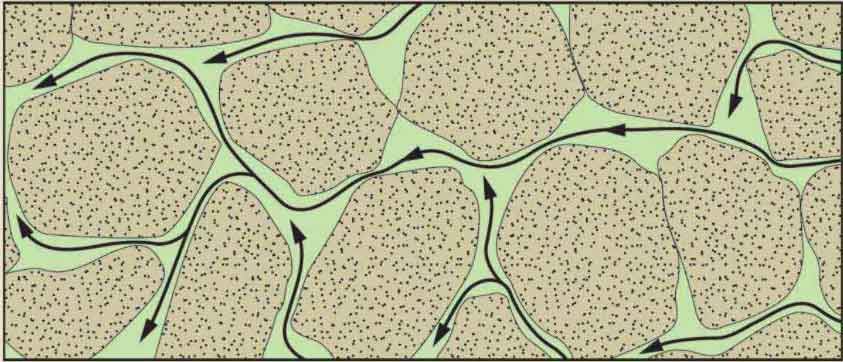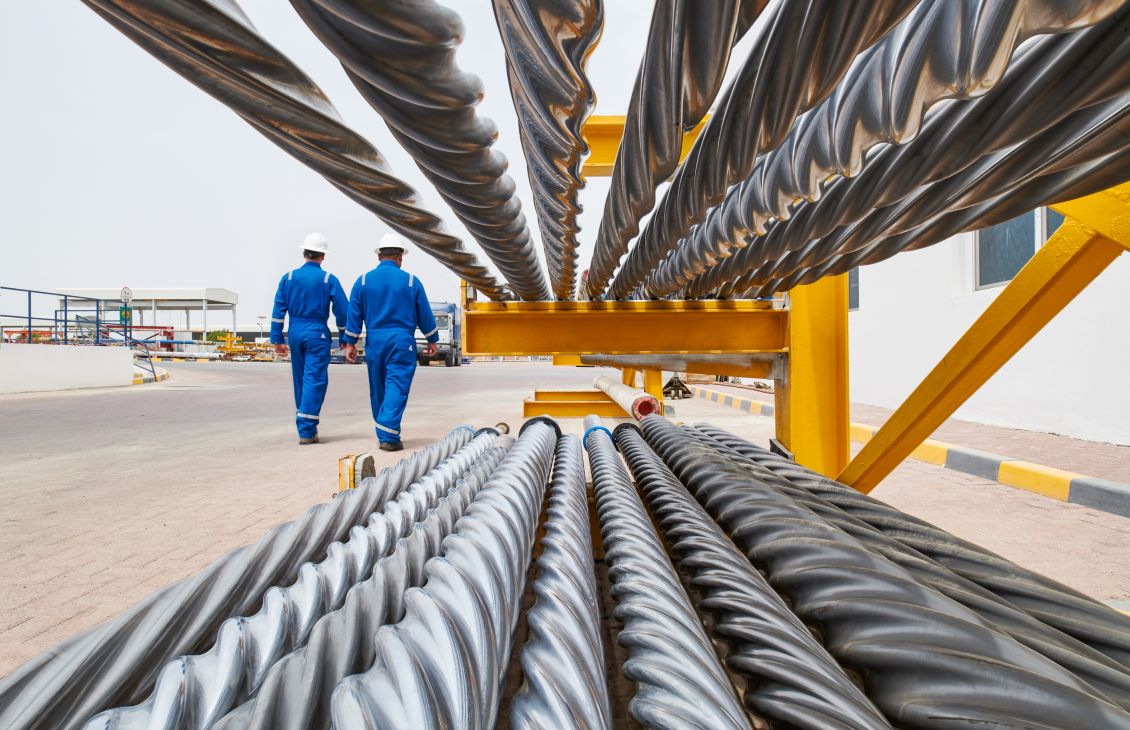

Defining Permeability
Discover how this downhole parameter affects production.

Permeability is the property of a porous material that determines how easily fluid flows through that material—a basic measure of the producibility and injectivity of subsurface formations. Without sufficient formation permeability, oil and gas production, secondary and tertiary recovery, and carbon sequestration are impossible.
Permeability is defined in units of area of open pore space in the cross section that faces, or is perpendicular to, the direction of flow. The common unit for permeability is the darcy, named for French engineer Henry Darcy. His experiments with water and sand led to the formulation of Darcy’s law, which describes the steady-state flow of fluid through porous media.
Although permeability is nearly directly proportional to the material’s porosity, many factors affect permeability. Textural and geologic factors may increase or decrease the cross-sectional area of the pore space. The size of the material’s constituent grains, their shape, and how well they are sorted all impact the space between grains and thus the material’s permeability.
In the field, permeability can be estimated in the near-wellbore region using well log data, primarily from nuclear magnetic resonance (NMR) tools. Permeability on the reservoir scale is typically determined with downhole reservoir tests and pressure transient analyses.
BYLINE
Richard Nolen-Hoeksema
PUBLICATION
Oilfield Review

“Defining Permeability,” part of a series of introductory articles, describes the basic concepts of permeability, its origins, and how paraphysicists determine its value in prospective reservoirs. Whether you are new to the industry or just looking to review the basics, this short article is a resource for understanding the fundamental concepts around permeability in the E&P industry.
Download the “Defining Permeability” article here.
Transformative Technology
-

Defining Well Intervention
Extending the life of producing wells.
-

Defining Permeability
Discover how this downhole parameter affects production.
-

Defining Artificial Lift
Options and considerations in delivering the ideal system.
-

Defining Directional Drilling
The art of controlling wellbore trajectory.
-

Defining Reservoir Engineering
Application of engineering principles for evaluating and managing reservoirs.
-

Defining Geomechanics
Geomechanics is the study of how soils and rocks deform, sometimes to failure, in response to changes of stress, pressure, temperature and other environmental parameters.